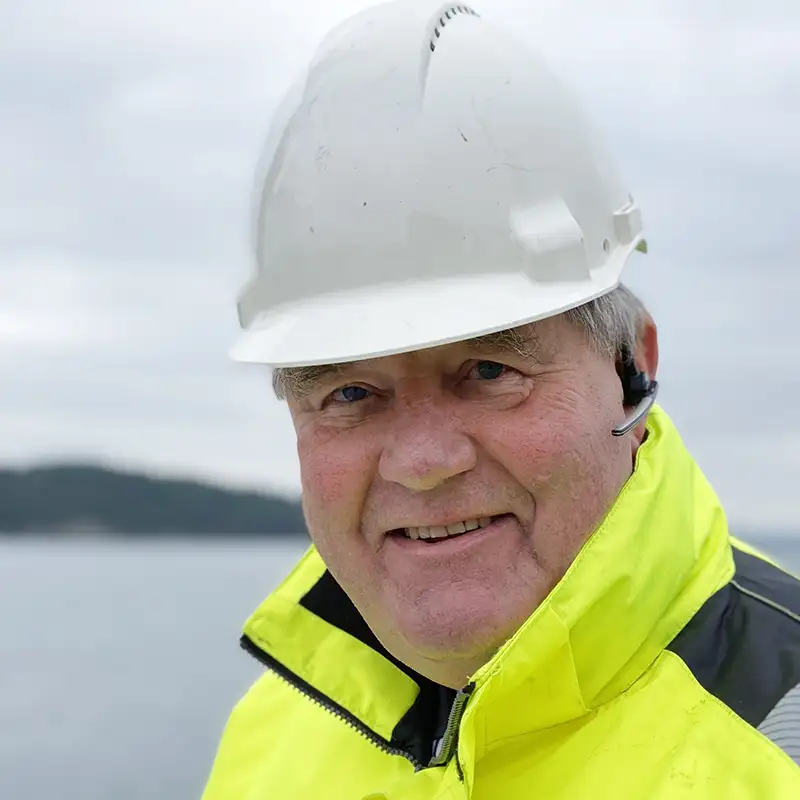Fun and challenging
Having grown up in a quiet suburb south of Gothenburg in Sweden, Peter Santesson gives the impression that his early life was much the same as that of any other child. However, his neighbour just happened to be Pelle Pettersson, a world champion sailor (winner of two Olympic medals) and renowned yacht designer. The story has it that Pelle asked the little boy next door to help prep his Star boat for the races by wet sanding the hull until it was smooth as a mirror. Having proved to be very good at sanding, Peter was later hired by his neighbour to work at his rapidly growing boat-building business, Maxi Yachts. Pelle Pettersson also asked Peter to crew and help out at major sail racing events, such as the Admiral’s Cup and the America’s Cup, the pinnacle of sailing. Peter’s yachting experience later led to him establishing and managing a yacht charter business, with 25 Maxi yachts in Sweden and 20 working out of Guadeloupe in the Caribbean.
“I have been back to the Caribbean many times since, both to look at prospective projects with our agent and to help plan and build marinas,” says Peter. “We had a project at Linton Bay in Panama a few years back. I remember the charts were very old and not entirely accurate. To ensure safe passage into the bay for the 185-metre-long vessel delivering the pontoons we had to do new bottom soundings and make new charts. Just a few weeks later the first yachts were moored in the new marina.”
Peter says SF Marina is at the forefront in floating pontoons and breakwaters. “We now build marinas in exposed locations that we would simply have turned away from ten years ago. Our floating breakwaters used to be four metres wide, then six, and now we have developed one that is 10 metres wide. Making them wide is perhaps not that tricky, apart from handling the extra bulk – up to 300 tonnes – but keeping the larger, heavier units together in extreme weather conditions is a challenge. Unfortunately, you cannot dimension a marina for a glassy sea,” says Peter. “At the moment”, he adds, “We are building 700-metres of floating breakwaters for a typhoon shelter in Hong Kong. With gusts of up to 200 km/h it can be pretty harsh. There are some things you can only learn in a storm.”
Peter joined SF Marina in 2002 to help develop the Swedish market, initially designing and building pontoons for floating houses and hotels. Over the years he has leaned more and more towards international projects such as Linton Bay and Hong Kong, although last year he did deliver the base structure for another Swedish floating hotel, Slottsholmen. Looking ahead, beyond Covid-19, Peter hopes to spend more time in his role as Southeast Asia Area Manager, supporting local agents and developing new business in the region.
“Compared to Europe, North America and the Caribbean, Southeast Asia is still an almost unknown cruising region and only just emerging on the yacht charter scene. SF Marina’s projects in countries like Thailand, Malaysia and Indonesia have so far tended to be industrial docking systems and specialised structures, such as ferry landing pontoons and navy and tugboat docks, rather than yacht marinas,” says Peter. “We have installed over 30 ferry-landing docks in Thailand. The one in Pak Meng was even inaugurated by the Thai Prime Minister, General Prayut Chan-o-cha. In Malaysia we have, together with our local partner, also installed ferry landing pontoons and a navy dock in the Johor Strait. Nevertheless, I see great potential for our 10-metre-wide floating breakwaters, as they can bring economic opportunities to remote islands that were previously deemed too exposed to be locations for a proper harbour.”
Peter says there are also similarities between all markets. “You meet new, interesting people, and you help solve their problems, which is very gratifying. You also deal with the forces of nature and production planning that can be quite tricky. It’s hard work, but I find it fun and challenging.”
While SF Marina will always stay true to its Scandinavian roots, we are proud to have a presence in the fast-growing Southeast Asia region. In order to meet the region’s marine infrastructure needs in a sustainable manner, we have a production plant in Thailand and work with licensed manufacturers in Indonesia and Malaysia.




